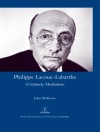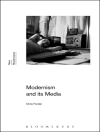Cutting-edge scholarly articles on diverse aspects of Goethe and his age, featuring in this volume a special section on the poetics of space in the Goethezeit.
The
Goethe Yearbook is a publication of the Goethe Society of North America, encouraging North American Goethe scholarship by publishing original English-language contributions to the understanding of Goethe and other authors of the
Goethezeit while also welcoming contributions from scholars around the world. Volume 24 features a special section titled ‘The Poetics of Space in the Goethezeit, ‘ co-edited by John Lyon and Elliott Schreiber, with contributions on blind spots in Goethe’s
Elective Affinities; on the topography and topoi of Goethe’s autobiographical childhood; on disorientation and the subterranean in Novalis; on selfhood, sovereignty, and public space in
Die italienische Reise and Dichtung und Wahrheit; on Goethe’s theater of anamnesis in
Wilhelm Meisters Lehrjahre; and on spatial mobilization in Kleist’s
Berliner Abendblätter. There are also articles on the horror of coming home in Caroline de la Motte Fouqué’s ‘Der Abtrünnige’ and on Friedrich Heinrich Jacobi’s
Eduard Allwills Papiere.
Contributors: Colin Benert, Stephanie Galasso, Tove Holmes, Edgar Landgraf, Sara Luly, John B. Lyon, Anthony Mahler, Monika Nenon, Joseph O’Neil, Elliott Schreiber, Inge Stephan, Gabriel Trop, Christian P. Weber.
Adrian Daub is Associate Professor of German at Stanford. Elisabeth Krimmer is Professor of German at the University of California Davis. Book review editor Birgit Tautz is Associate Professor of German at Bowdoin College.
Зміст
Introduction to the Special Section on the Poetics of Space in the
Goethezeit
The Theater of Anamnesis: The Spaces of Memory and the Exteriority of Time in
Wilhelm Meisters Lehrjahre
Affective Enclosures: The Topography and Topoi of Goethe’s Autobiographical Childhood
Blind Spots as Projection Spaces in
Die Wahlverwandtschaften
Disorientation in Novalis or ‘The Subterranean Homesick Blues’
Selfhood, Sovereignty, and Public Space in
Die italienische Reise, ‘Das Rochus-Fest zu Bingen, ‘ and
Dichtung und Wahrheit, Book Five
Spatial Mobilization: Kleist’s Strategic Road Map for the
Berliner Abendblätter and Tactical Displacements in the ‘Tagesbegebenheiten’
‘Daseyn enthüllen’: Zum mediengeschichtlichen Kontext von Friedrich Heinrich Jacobis
Eduard Allwills Papiere
The Horror of Coming Home: Integration and Fragmentation in Caroline de la Motte Fouqué’s ‘Der Abtrünnige’
Form and Contention:
Sati as Custom in Günderrode’s ‘Die Malabarischen Witwen’
Absolute Signification and Ontological Inconsistency in E. T. A. Hoffmann’s
Der Sandmann
Educational Environments: Narration and Education in Campe, Goethe, and Kleist
‘War Goethe ein Mohammedaner?’: Goethes
West-östlicher Divan (1819) als Spiegelungsfläche in Thomas Lehrs
September. Fata Morgana (2010)
Book Reviews
Про автора
ELISABETH KRIMMER is Professor of German at the University of California, Davis.












